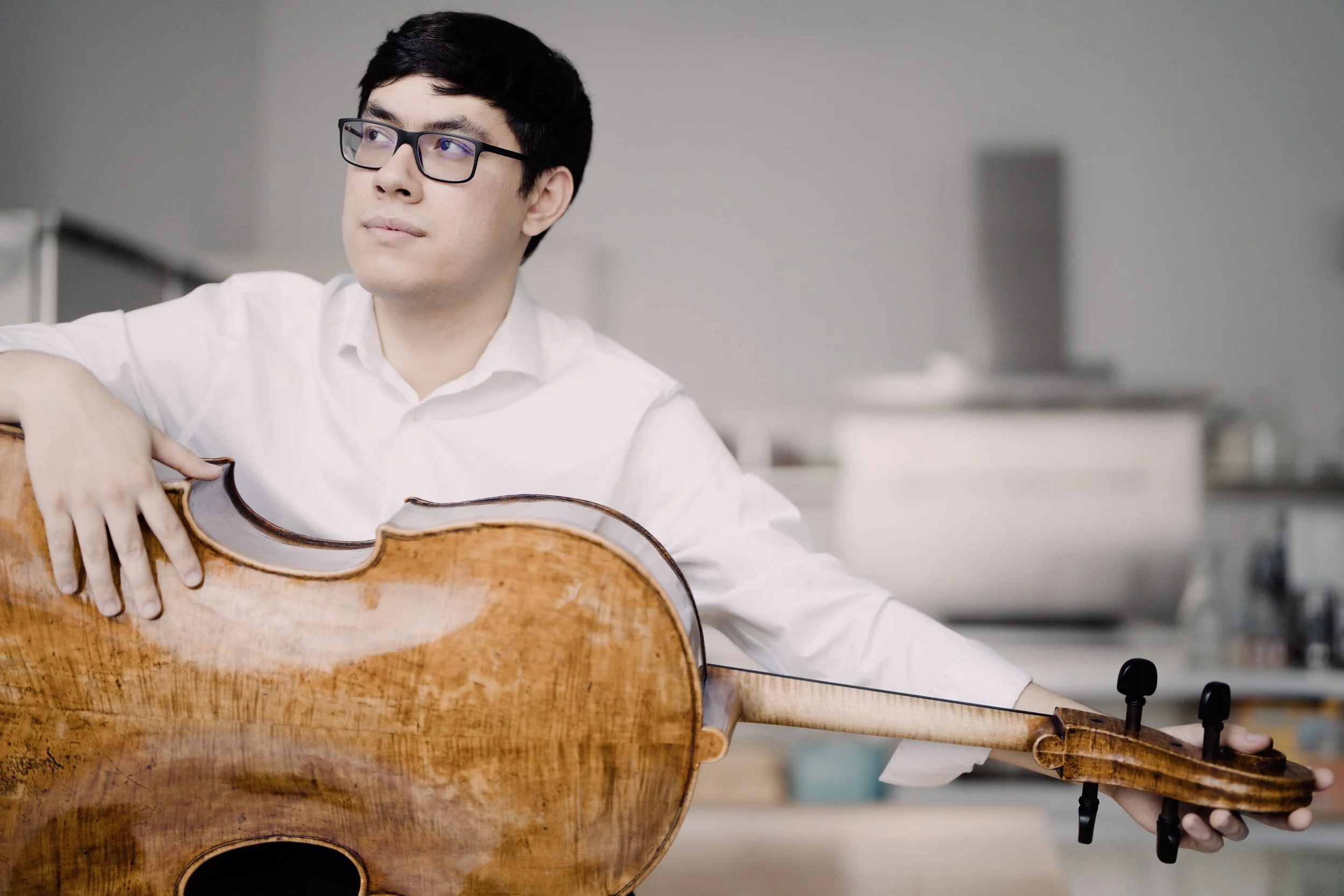The Rite of Spring @ Dallas Symphony Orchestra
—Wayne Lee Gay
A world premiere and two standard favorites from the Russian symphonic repertoire handsomely show off the Dallas Symphony Orchestra, principal guest conductor Gemma New, and a rising young cellist with a distinctive profile. It all happens this weekend at the Morton H. Meyerson Symphony Center.
The heart of the concert belongs to American composer Katherine Balch's whisper concerto for cello and orchestra, with 23-year-old American cellist Zlatomir Fung making his DSO debut as soloist. Composer Balch is best-known for her introduction of everyday sounds and objects into large-scale compositions. In this case, the most obvious gesture in that direction is in replacing the soloist's bow with a chopstick for the central movement of the work.
According to Balch, the title derives from the "whisper cadenza" in the Violin Concerto of twentieth-century Hungarian composer Gyorgy Ligeti. Balch's Concerto, while reminiscent of a traditional form in its three-movement structure, announces early on that it is anything but traditional; indeed, the opening passages are almost unrecognizable as symphonic music, so distinctive and original is Balch's use of the orchestra.
Non-traditional, yes, but constantly intriguing. Early on, the music takes on a spatial effect, as if motifs are leaping through the air from one section of the orchestra to another. And, much of the time, instruments simply do not sound at all like themselves. While you're not likely to go out humming the tunes, the attentive listener can fall under the spell of the music, which in the end, after constant complexities, glides effortlessly into a serenely chorale-like closing passage. Soloist Fung navigates easily through the relentless demands of the solo part, while conductor New and the orchestra conquer the equally complex orchestral part.
The placement of Borodin's "Polovtzian Dances" and Stravinsky's The Rite of Spring on either side of the whisper concerto underlines some intriguing relationships between those two works. Both were written for theater pit orchestras, as accompaniment for ballet, and both have served nicely for over a century as concert works for large orchestra, independent of choreography. Each were composed to evoke imagined exotic or primitive cultures.
Borodin created opulent orchestral effects and sensuous melodies for his effort, resulting in a piece that has pleased audiences for years, here handled nicely by New and the orchestra. Stravinsky, however, wrought an epic-shattering score, the premiere of which in many ways marked the birth of twentieth-century modernism. The haunting melodies (drawn from Russian folk tunes) and jolting rhythms shock and thrill regardless of how many times the listener has heard them. One does not need actual staging to sense and experience the aura of a vulnerable and violent community, deeply entwined with the cruelties and cycles of the natural world. Once again, New and the orchestra performed beautifully, and principal bassoonist Ted Soluri's hypnotic delivery of that famous opening phrase set the tone for an appropriately breathtaking performance.
WHEN: Repeated Friday and Saturday (April 21 & 23)
WHERE: Meyerson Symphony Center, Dallas
WEB: dallassymphony.org

